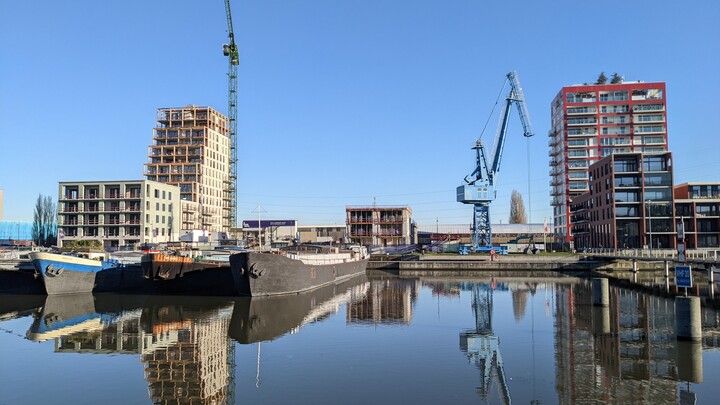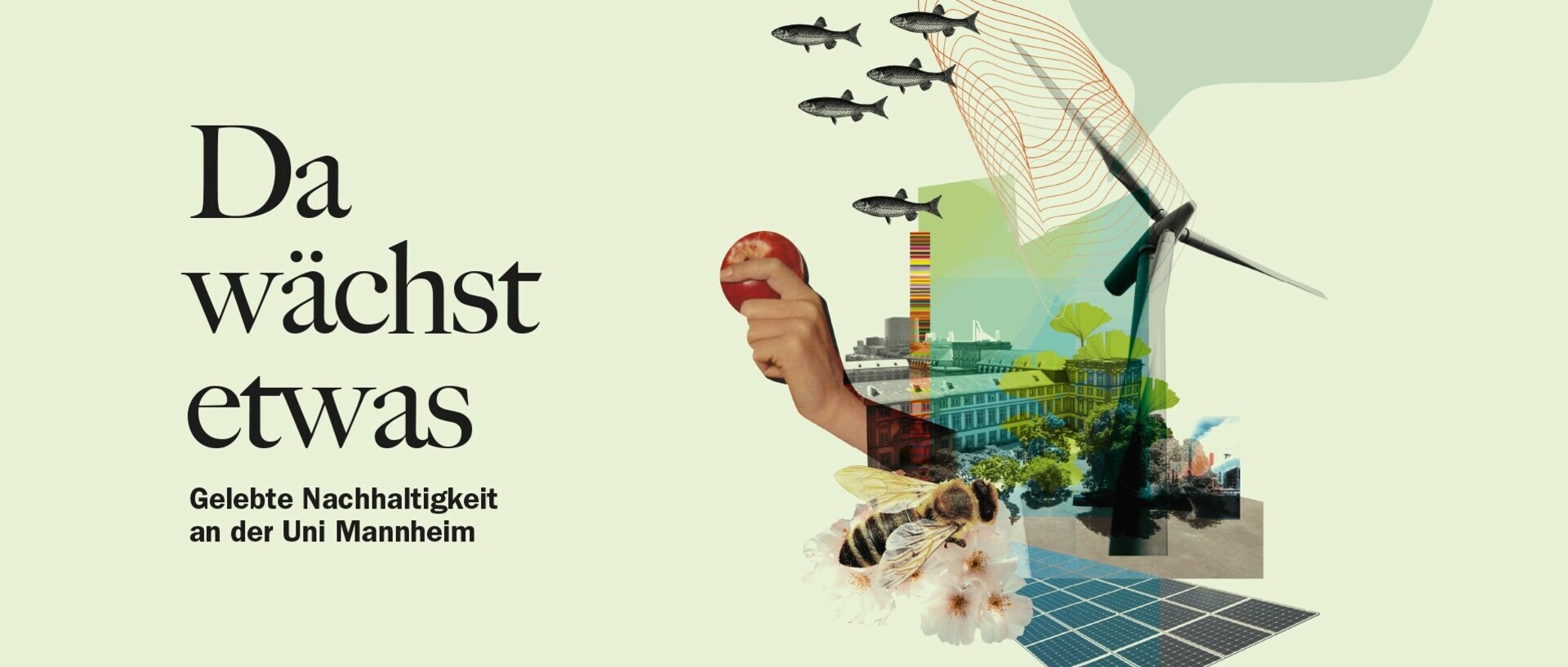Energy Islands in the Heart of Europe
What do the San Raffaele Hospital in Segrate near Milan, Poznan University of Technology in Poland and a new housing development in the port of Ghent all have in common? At first sight, truly not a lot. And yet, there is something that unites them: At each of these locations in the heart of Europe, energy islands will be established.

Passing by the quay, one will notice gently floating cutters, inviting houseboats with folding chairs on deck and two sky-blue port cranes towering above the entire district. Nieuwe Dokken, a hip dock area located in Ghent, Belgium, has a very compelling marine industrial charm. The recently founded sustainability cooperative “Du Coop” has built three big and terraced residential units, overlooking the waters of the dock, in this area. The slogan supposed to attract potential home buyers matches the atmosphere perfectly: “Living near the water, bathing in light”. This line probably refers to the large window fronts of the units, the spectacular view over Belgium’s third biggest inland port or the evening sun reflecting on the water. Yet there is no better way to summarize the innovative circular economy implemented in this new neighborhood. Bathing water is often directly heated by the sun thanks to both the photovoltaic system installed on the roof and the central heating located in the basement. Thus, whoever lets water into the tub, bathes in light. In addition to the new housing development in Ghent, such energy islands are established at two other locations in Europe. The European Union funds the academic support of these projects. An international research team is analyzing the energy management of renewable energies. Their ambitious goal is to achieve 100 percent energy self-sufficiency for these three innovative sites. Dr. Sonja Klingert from the chair of Information Systems II at the University of Mannheim is at the center of the project. As the project manager, Klingert oversees the project and manages the pilot activities across Europe while sticking to the train to attend her meetings.
From the beginning, the Mannheim researcher and her interdisciplinary team from the chairs of Information Systems II and Consumer Psychology have been highly committed and developed ideas that eventually led to the project proposal. Dr. Klinger co-authored the proposal and was happy that the project received the EU grant. “Our goal is to let the people have control over the majority of their energy and power consumption, hoping that this will accelerate the energy transition. In our pilot projects, we show how this can be done”, says Sonja Klingert. In November 2020, the research team started to work on sustainable projects. Since then, a lot has happened. The architecture of the IT system is ready and is being implemented in an agile process. The first psychological studies on the mindset and goals of all participants involved in the pilot projects are currently evaluated. The overall question is: How can the use of renewable energies be better integrated into everyday life? To answer this question, researchers from the most diverse disciplines work together on the RENergetic project. “What we want to avoid at all costs is developing a crafty IT tool that eventually fails because people do not use it or because it does not match the regulative framework conditions,” explains Professor Dr. Christian Becker from the chair of Information Systems II. This is why the researchers are currently trying to find the best combination of intelligent control and incentives for the users for the most efficient thermal load management.
The energy island of the Belgian dock area has a very clever circulation system: Even the last bit of heat is taken from the wastewater from the shower, dishwasher, and laundry machine, is led back to the circulation and used to generate heat. Kitchen waste does not end up in the garbage can, but in the composting system of each house. Here it is either transformed into biogas for heating or into fertilization product for the district’s green zones. However, even the most innovative technology can only be used efficiently if everyone cooperates. This often means to break old habits. In Ghent, there is a peak in heat generation at five o’clock in the morning. It would be best if people already heated their rooms at that time and did not wait until they are in the kitchen, making their first coffee. “We want them to accept that their apartments can be warm as early as they wake up and that the system is not used as much between 8 a.m. and 10 am. However, we need to communicate this. We know from psychological research that people are more likely to accept new concepts if they trust the corresponding organization. Transparency is key here”, explains the Mannheim psychologist Dr. Celina Kacperski. At present, the research team is discussing if they should send push notifications or use a graphic the users have to actively access.
The inhabitants of the Belgian dock area, the students at Poznan University of Technology in Poland or the employees of the hospital complex in northern Italy are all pioneers in testing energy self-sufficiency. Everything that is analyzed and discovered in these projects will be directly reflected in the web interface developed by the team of the RENergetic project. But the three energy islands are not to remain the only ones. “That is the key feature of this project: The EU aims at replicability. In order to have an energy impact, we want as many energy islands as possible in Europe”, says Sonja Klingert about the research objective. Primarily, the IT system’s architecture must be replicable. The data models that are developed based on the pilot projects should also apply to other locations. Naturally, not every component currently developed by the researcher group will be used for every future project or case. This is already true for the present projects: Poznan does not rely on electromobility; thus, the corresponding module is not necessary. Yet, in Ghent and Segrate, electromobility plays a major role. Whenever Sonja Klingert talks about such challenges, one can hear the enthusiasm in her voice. “At home, it is my own responsibility to look out for sunshine so that I can connect our electric car to the power outlet. With the help of our project, we can soon assist a lot of people in making such decisions and thus actively participate in the energy transition”, says Klingert. If everything stays on track, the research team will meet up in Poznan in early summer. One look at the Deutsche Bahn app reveals: She will have to change trains three times and it will take her eight and a half hours to get there.
Text: Jule Leger / April 2022
